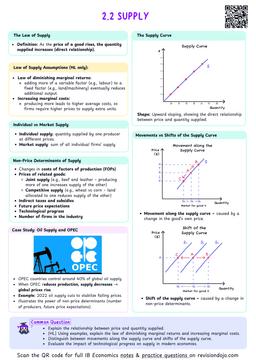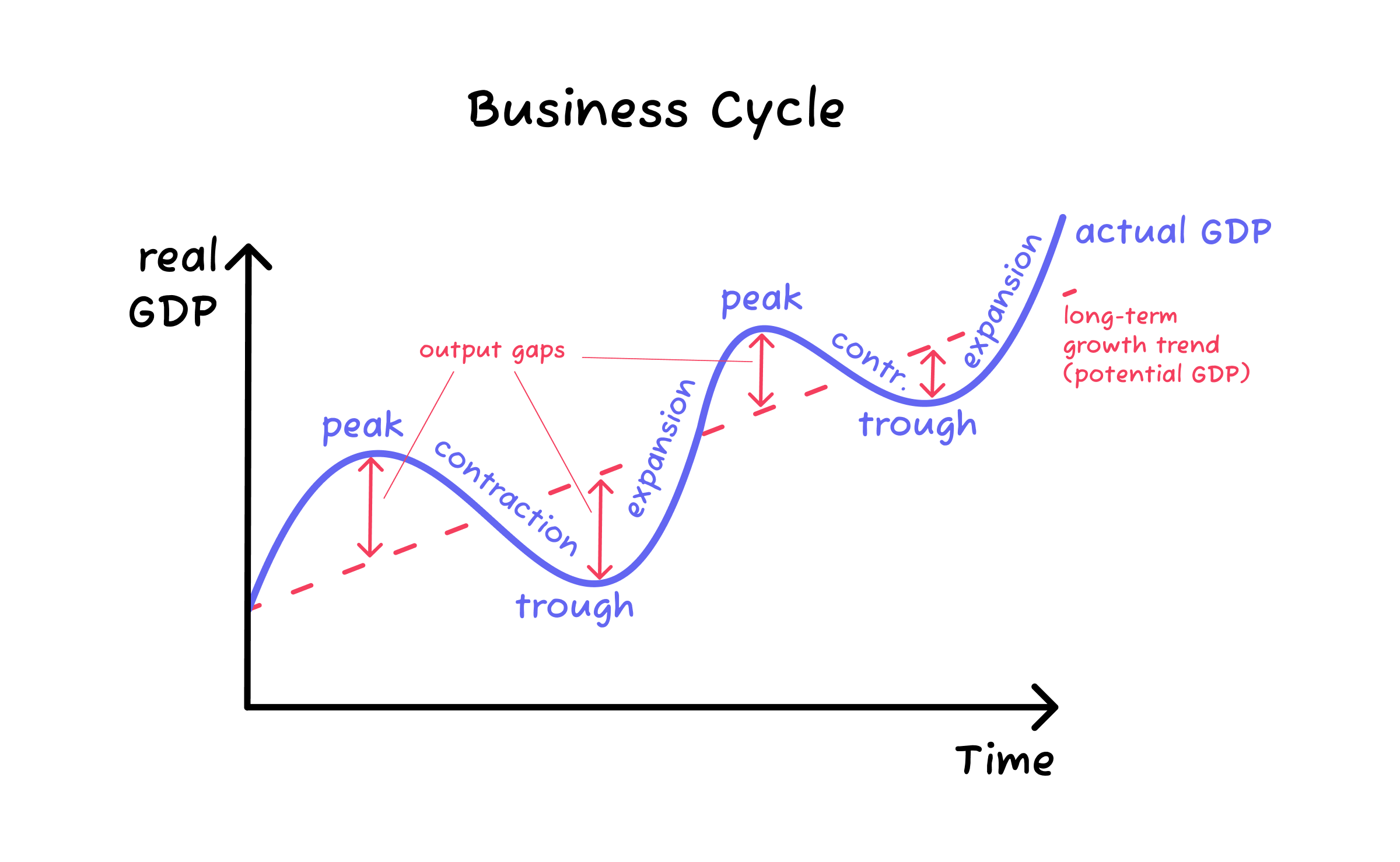Business cycle
Fluctuations in the growth of real output, characterised by alternating phases of expansion (rising real output) and contraction (falling real output).
- The business cycle refers to the periodic ups and downs in economic activity over time.
- It tracks how real GDP (Gross Domestic Product) fluctuates above and below its long-term growth trend.
- These cycles are a natural feature of economies, influenced by factors such as changes in aggregate demand and supply, external shocks, and government policies.

Pay attention to the axis of Figure 1.
- The 'x axis' represents 'time'.
- The 'y axis' represents the 'real GDP' of an economy.
The phases of the business cycle
The business cycle consists of four key phases, each with unique characteristics. These four phases can be seen in Figure 1 above.
Expansion
A period of positive real GDP growth.
Characteristics:
- Employment of resources increases.
- Accompanied by rising general price levels (inflation).
Expansions are represented by upward-sloping sections of the business cycle curve.
Peak
The maximum level of real GDP in a cycle, marking the end of an expansion.
Characteristics:
- At its peak, the economy reaches its lowest unemployment of resources in the cycle.
- The average price level is still rising rapidly, leading to inflationary pressures.
Peaks are represented by the maximums of the business cycle curve.
Contraction
A period of negative real GDP growth (falling real output).
Characteristics:
- Rising unemployment, causing firms to reduce output.
- Price levels stop increasing rapidly, and even decrease in some cases.
Contractions are represented by downward-sloping sections of the business cycle curve.
Recession
Sustained falling real output in an economy (a contraction in the business cycle) lasting two consecutive quarters (6 months).
Trough
The lowest level of real GDP in a cycle, marking the end of a contraction.



